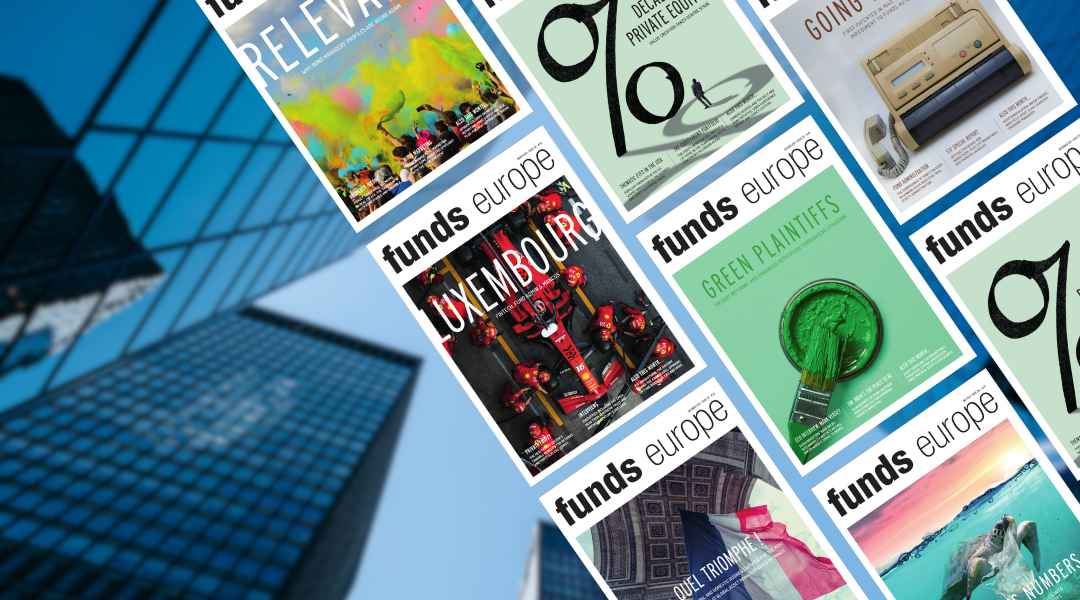 LALE AKONER, SENIOR MARKET STRATEGIST AND ECONOMIST, BNY MELLON INVESTMENT MANAGEMENT
How are investors engaging with ESG issues in China?
LALE AKONER, SENIOR MARKET STRATEGIST AND ECONOMIST, BNY MELLON INVESTMENT MANAGEMENT
How are investors engaging with ESG issues in China?Investors are especially monitoring the environmental aspect of ESG investments in China. This is because China can achieve a significant change in overall ESG performance with improvements in the environment area, given there is more to improve here compared to other countries with similar income levels. Recently, the Chinese congress’s 14th Five-Year Plan set the goal of cutting energy consumption and carbon emissions per GDP by 13.5% and 18% respectively by 2025. China also plans to reach peak carbon emissions by 2030 and carbon neutrality by 2060. We think the market is currently underpricing China’s environmental goals – green policy achievements in the next few years will be stronger than what the market is pricing in currently. Could the deglobalisation trend accelerated by the pandemic be detrimental to emerging market countries?
Deglobalisation leads to trade frictions, causing supply chains to shorten or diversify to countries where costs to trade are lower (countries that are closer and politically more alike). Hence, we may see global trade disintegrating into three blocs: an Asian trade bloc centred on China, a European trade bloc and an American trade bloc centred on the US, Canada and Mexico. As pre-existing complex supply chains are under threat from deglobalisation, any given country’s flexibility to adapt to this new three-bloc trade environment will be crucial. However, if the country cannot ensure low tariff engagements with trade partners, past investments could become obsolete, leading to corporate losses. Asian regional trade bloc members may have an easier time adapting, as the region’s trading bloc with China at its centre has been in the making during the past decade, helped by spreading technological know-how and rising prosperity of the region’s middle class. Covid-19 simply accelerated this transition. Aside from Covid, what are the core challenges facing investors in different emerging markets?
The pandemic has changed the risk-reward balance, and there is significant dispersion of region and country outcomes. We therefore think that EM investors will benefit from active asset allocation. From a macro standpoint, we distinguish between EM winners and losers based on three factors: speed of vaccine rollouts vs new infections, monetary and fiscal policy outlook and idiosyncratic, country-specific risk factors.
- Many EMs have been racing to rollout vaccines against new waves of infections. On a regional basis, we expect Asia to come out of the pandemic leading the recovery, followed by CEE (Central and Eastern Europe), while LatAm lags all regions. Through the end of the year, we think that vaccine rollout will level the playfield for intra-EM performance.
- For the rest of 2021, we think EMs are even more at risk from rising inflationary pressure than DMs. Rising inflation is a major constraint for additional EM easing and may even lead to early rate hikes. For active asset allocation, investors should closely monitor the divergence of inflation risks across countries. Based on minimal second wave risks (disinflationary) and consumer recovery prospects (inflationary), we think that North Asia and CEE countries will tend towards tighter policy. Commodity exporters such as Brazil and Russia are also facing significant inflationary pressures. On the other hand, Mexico and Indonesia will likely remain in easy policy mode, which creates investment opportunities in their local rate markets.
- We also monitor EM countries that are most vulnerable to a sustained tightening in global financial conditions. More stressed EMs, i.e. the ones that have high dollar debt, external financing needs and current account deficits are especially vulnerable to a steep rise in real yields and strengthening of the US dollar. Current vulnerability indicators indicate that South Africa, Turkey and Brazil may suffer from increased capital outflows if there is a severe tightening of global financial conditions.
 MARCIN ADAMCZYK, HEAD OF EMERGING MARKET DEBT, NN INVESTMENT PARTNERS
Beyond headline volatility, where are you identifying value in emerging market debt for your investors and what fundamentals underline this?
MARCIN ADAMCZYK, HEAD OF EMERGING MARKET DEBT, NN INVESTMENT PARTNERS
Beyond headline volatility, where are you identifying value in emerging market debt for your investors and what fundamentals underline this?Given the strong global growth recovery expected for 2021, underpinning commodity prices and supporting the international trade, we expect a continued improvement in emerging market fundamentals across the board. Looking at high sensitivity to commodity export and low sensitivity to global rates, the high-yielding and frontier sector of EM sovereigns looks particularly attractively valued. As shown by the IMF’s decision to increase SDR allocation, the support from multilateral lenders remains a strong anchor for emerging countries. EM corporates are also well positioned to benefit from growth recovery given low leverage and attractive valuation for example in Asia or Latin America. The pandemic has underscored the need for action on social issues and sparked a rise in social bond issuance. Therefore, we expect issuance of green, social and sustainability bonds to rise apace in 2021. What are the three key risks/vulnerabilities that investors should be paying attention to when it comes to emerging market debt?
The first vulnerability lies with the pandemic-related increase in the accumulated stock of debt for EM countries for which the fundamental healing is now required. A necessary driver to achieve this healing is the return of EM growth. That leads us to the second risk, that still can delay the recovery process, so any further shocks in the virus situation (like in India), leading to more lockdowns and being amplified by a slow vaccination progress in many EM countries. Finally, the third risk centres around inflation and the debate on its nature. Is the recent rise transitory or does it signal a more permanent regime shift leading to a deterioration in inflation expectations, hence pushing US real rates further up and sparking the risk-aversion that adversely impacts EMs. What are the starkest contrasts when it comes to the gap in the emerging market debt universe and how do you navigate these when it comes to asset allocation decisions?
We always assess countries based on four lenses: fundamentals, technicals, valuation and ESG. The combination of those factors is used when taking country allocation decisions. On the fundamental front, EM recovery, while strong, is marked by a high dispersion between regions and countries. Therefore, we look at themes like commodity exporters vs importers, high-yielding versus low-yielding countries (rate sensitivity), vaccination progress and also geopolitical alpha. As the global growth will be led by China and US, the important theme for all emerging markets is how they can benefit from such a polarised composition of global recovery. That could include exports to US and China or being in the supply chain for those superpowers. Finally, given the increasing importance of sustainability in EMD, strategies that consistently integrate ESG factors and work to tackle still-prevalent data and transparency issues will be best placed to take advantage of this growing trend.

 At times like these, HSBC Asset Management easily pivots towards emerging markets.
At times like these, HSBC Asset Management easily pivots towards emerging markets. A comprehensive, cost-effective, and transparent currency overlay hedging solution is crucial to mitigate FX exposure risks in the complex landscapes of Japan and China's FX markets, explains Hans Jacob Feder, PhD, global head of FX services at MUFG Investor Services.
A comprehensive, cost-effective, and transparent currency overlay hedging solution is crucial to mitigate FX exposure risks in the complex landscapes of Japan and China's FX markets, explains Hans Jacob Feder, PhD, global head of FX services at MUFG Investor Services. The world is transitioning from an era of commodity abundance to one of undersupply. Ben Ross and Tyler Rosenlicht of Cohen & Steers believe this shift may result in significant returns for commodities and resource producers over the next decade.
The world is transitioning from an era of commodity abundance to one of undersupply. Ben Ross and Tyler Rosenlicht of Cohen & Steers believe this shift may result in significant returns for commodities and resource producers over the next decade. Ross Dilkes, fixed income portfolio manager at Wellington Management, examines the opportunities and risks for bond investors presented by the region’s decarbonisation agenda.
Ross Dilkes, fixed income portfolio manager at Wellington Management, examines the opportunities and risks for bond investors presented by the region’s decarbonisation agenda. Shareholders in Japan no longer accept below-par corporate governance standards. Changes are taking place, but there are still areas for improvement, says Tetsuro Takase at SuMi Trust.
Shareholders in Japan no longer accept below-par corporate governance standards. Changes are taking place, but there are still areas for improvement, says Tetsuro Takase at SuMi Trust. Robert St Clair, head of investment strategy at Fullerton Fund Management, explores the reasons investors should be paying attention to the rising demand for healthcare in China.
Robert St Clair, head of investment strategy at Fullerton Fund Management, explores the reasons investors should be paying attention to the rising demand for healthcare in China.


